The First U.S. National Park Is Still Iconic as Ever — How to Visit
Here’s everything you need to know before planning a trip to Yellowstone National Park.
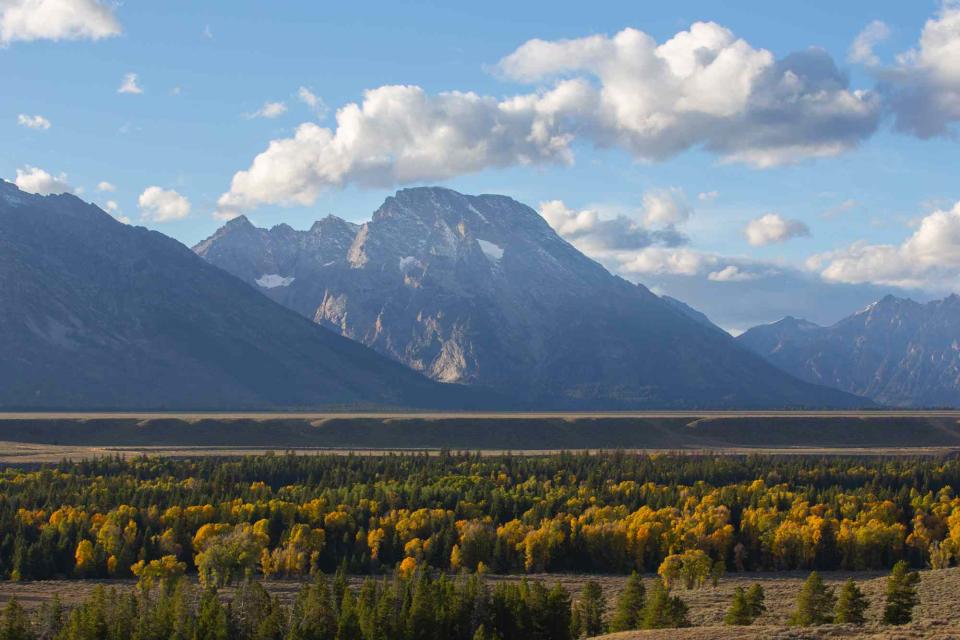
Daniel Ribar/Travel + Leisure
Yellowstone National Park, which straddles Wyoming, Montana, and Idaho, is Travel + Leisure readers’ favorite national park, and it was the most popular park in 2023 according to Google. So what’s all the fuss about? Well, it has otherworldly geothermal elements, is a treasure chest of iconic megafauna and elusive predators, and, frankly, is simply stunning.
You could spend years here and still find something new to be awestruck by. Unfortunately, many people who visit barely scratch the surface. T+L spoke to two Yellowstone experts, Daryl Hunter and Linda Veress, who want visitors to take a bigger bite out of the park. “I recommend people get out of their vehicles and walk around, go for a walk. So many people will just drive around and around. Even if it’s just a short walk around the boardwalk, being outside, experiencing the peace makes a huge difference,” Veress said.
“A mistake some people make is they go to the first puff of steam they see, and then they see it, and it’s okay, and then the second one, and it is okay. And then they’re tired of looking at okay springs, and they drive right by the good ones and miss them,” Hunter said.
We don’t want you to miss the good ones. Enter: this guide to Yellowstone National Park.
Meet the Experts
Daryl Hunter has lived near Yellowstone since 1987, exploring every corner of the park as a wildlife and landscape photographer and interpretive guide.
Linda Veress is a park spokesperson who has worked and lived in Yellowstone for ten years.
Planning Your Visit
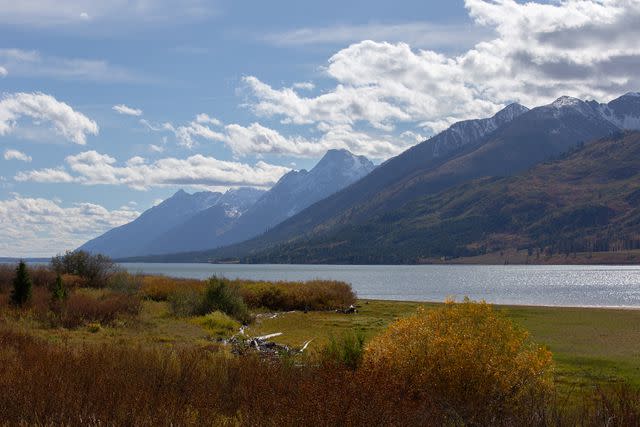
Daniel Ribar/Travel + Leisure
You don’t need to reserve a spot for your vehicle to enter Yellowstone National Park. Just remember that if you’re coming in through the South Entrance, you’ll pass through Grand Teton National Park first. There are separate entrance fees for each park, ranging from $20.00 to $35.00.
That said, you'll need to book accommodations and campsites well in advance — Yellowstone gets packed fast. “It’s not a place that [visitors] want to show up and think that they’ll be able to get a place to stay at the last minute,” Veress said.
If everything is booked inside the park, no problem — there are gateway communities you can stay in. “The closest ones will be West Yellowstone and Gardener. Those are just outside the park entrances. Some people will drive in from Jackson or Cody, but those are farther away,” Veress said.
Once you’re in the park, plan your time wisely. “You can spend a big week out there. Most people spend about three days or so,” Hunter said. If you only have a few days, follow Hunter’s advice: “Do the lower loop the first day, the upper loop the second day. The upper loop has more wildlife and fewer thermal features, and the lower area has many thermal features.” He also recommends that if you’re that close, you might as well drive to Jackson Hole for a day and see Grand Teton.
How to Get There
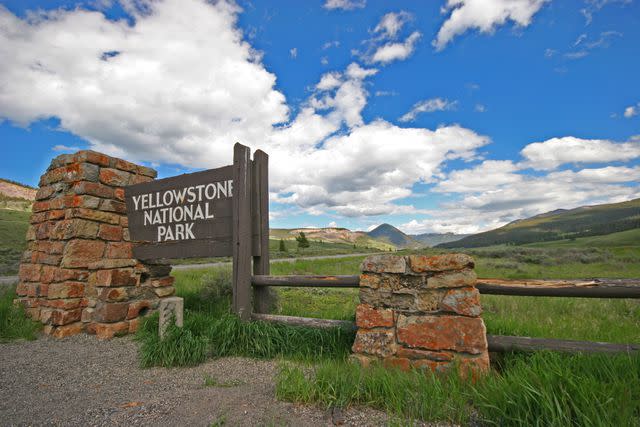
Tamas-V/Getty Images
Yellowstone has five entrances. The year-round North Entrance and the Northeast Entrance are closest to the northern loop, Mammoth Hot Springs, and more wildlife; the West Entrance is excellent for seeing geysers; the East Entrance is on the lake; and the South Entrance is closest to Jackson. You’ll need a car if you’re not on a guided tour.
Consider flying into Bozeman, Montana, or Jackson, Wyoming. You can also fly into Salt Lake City or Idaho Falls. Car rentals are typically cheaper from Idaho Falls or Bozeman than from Jackson. You can even fly into Jackson, spend a few days there before heading to Yellowstone, and then drop off your car in Bozeman or vice versa.
Best Time to Visit
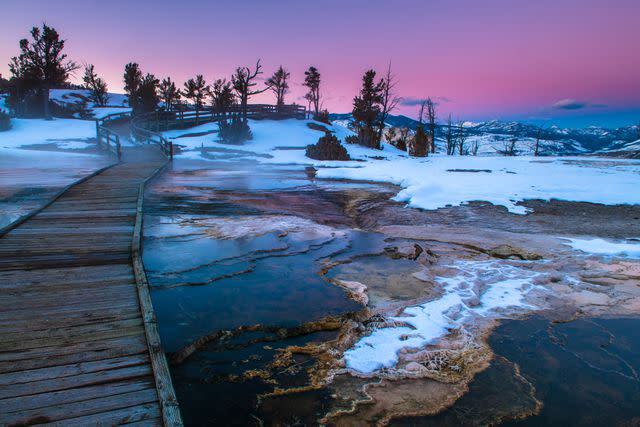
kwiktor/Getty Images
The best time to visit Yellowstone National Park varies depending on what you’re after. The summer season, typically from mid-April to the end of October, is ideal for traditional sightseeing, camping, and hiking. Most of the park’s roads are open during this time, allowing easy access to popular attractions.
To avoid crowds, consider visiting in May or June before Memorial Day or after Labor Day. These times offer a more peaceful experience with fewer visitors and better rates. Additionally, scheduling visits to popular areas like Old Faithful during early or late hours can help avoid peak crowds.
The park is quieter in the colder months, but has limited access. Only one road remains open year-round, so there are fewer opportunities for exploration unless you hop on a snowmobile tour. Access to the park’s interior is restricted to these guided tours. “You can stay at the snow lodge at Old Faithful and take ski trips. It’s a different way to see the park,” Veress said.
Best Things to Do in the Park
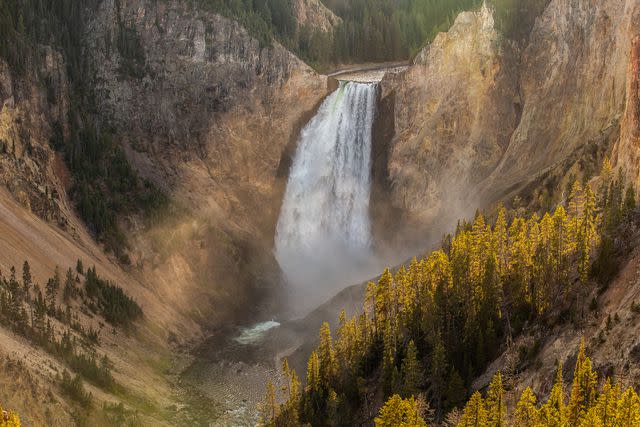
Daniel Ribar/Travel + Leisure
Visit Lower Geyser Basin.
To get a good sense of Yellowstone’s geothermal features, Hunter likes “everybody to see the Lower Geyser Basin, where the Fountain Paint Pot is. If you go to those two, you don’t have to go to other springs if you don’t have a lot of time.” The Fountain Paint Pot Trail is an easy half-mile trail.
See Grand Prismatic Spring.
Grand Prismatic Spring is an iconic sight in Yellowstone. The Grand Prismatic Overlook Trail allows you to see its shocking blue and orange colors from above, or you can follow the wooden walkway right next to it.
Ride a snowmobile or snowcoach.
If you visit Yellowstone in the winter, you have some exceptionally neat options to explore the park. Roads close, which limits your transportation to snowmobiles and snowcoaches — the only ways you’ll be able to see Old Faithful and Lower Falls. “If you don’t like being cold, you can take the snow coach. And make your reservations a long time ahead,” advised Hunter. Excursions sell out quickly.
Take a vintage car tour.
Hunter highlighted the unique experience of touring Yellowstone in vintage vehicles with retractable canvas roofs and panoramic windows. These historic yellow buses were initially introduced in the 1920s. Today, eight vintage White Motor Co. buses can show you the park in style.
Go for a ride.
“We have commercially guided outfitters that do either day or overnight horseback rides in the park,” Verress said. So, although no barns are actually in park bounds, you can still get in the saddle. For a truly memorable trip with another kind of ungulate, look into llama treks.
See Lower Yellowstone Falls.
Many people Hunter has taken on tours prefer this spectacular waterfall — in what’s dubbed the Grand Canyon of Yellowstone — to Old Faithful. “Lower Yellowstone Falls is a highlight for everybody,” he said.
Best Hikes
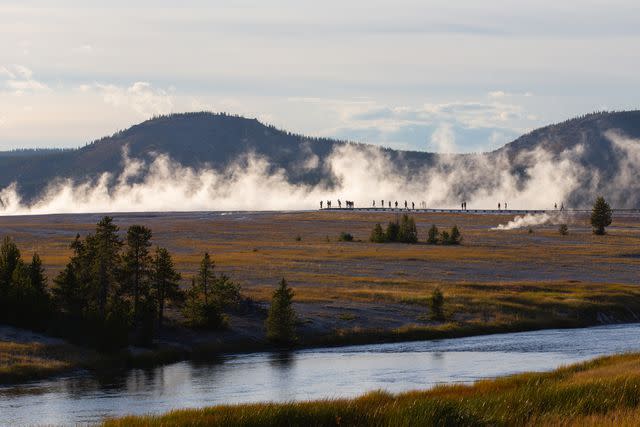
Daniel Ribar/Travel + Leisure
Yellowstone offers plenty of accessible flat and paved paths and boardwalks that can easily take up an entire day, but if you have the time and ability, definitely head out on a day hike. Hunter especially likes the 1.6-mile hike to Fairy Falls, which shares its trailhead with the path to Grand Prismatic Overlook. You can extend your journey to Spray and Imperial geysers if you're up for further adventure.
Storm Point Nature Trail takes you to a beautiful lake lookout (and a colony of yellow-bellied marmots). The kid-friendly Mystic Falls, Fairy Creek, and Little Firehole Loop is 3.5 miles and offers waterfalls and panoramic vistas of Biscuit Basin. The Lamar River Trail to Cache Creek takes you through meadows that become blanketed in wildflowers in June and July.
Wildlife and Natural Features
Yellowstone’s incredible wildlife is one of its main draws, the keystone species being majestic bison and elk, grizzly and black bears, and gray wolves.
The best time to catch a glimpse of grizzly bears and wolves is in the spring, particularly in northern regions like the Lamar Valley. “A good place to see black bears is in the vicinity of Tower Junction,” Hunter said. “There is a five-mile radius right around Tower Junction.” But you can also see them further south: “The Hayden Valley has gotten really good over the past 10 years,” he said.
If you’re eager to see bison, July and August are your best bets, especially in Hayden Valley where hundreds of bison will likely be roaming and causing traffic jams. “That’s the breeding season, and it’s a fun time to watch them because they’re all animated and looking for the ladies,” Hunter said.
Come September, during the rut — when male elk battle for dominance — early mornings come alive with elk bugling. Mammoth, Hayden Valley, and Madison Valley are great spots to see the show.
Places to Stay
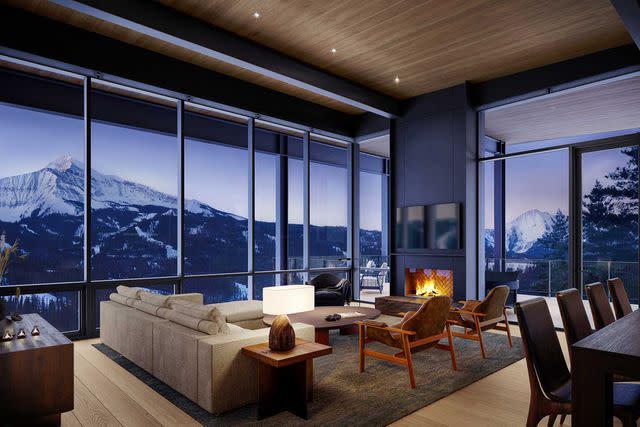
Courtesy of One&Only Resorts
Like anything, the best place to stay Yellowstone depends on your preferences, as luxury accommodations rub elbows with affordable lodges and campsites. Since Yellowstone is vast and involves significant driving, Veress recommends prioritizing where you stay based on what you want to see most. Different parts of the park offer distinct experiences, such as geothermal areas, wildlife viewing, and the lake area. For instance:
Consider staying near Old Faithful or West Yellowstone for geothermal attractions and activities. “You can get some good lodging just on the border of Yellowstone and West Yellowstone, Montana, and Gardener, Montana,” said Hunter. “It’s usually easier to get reservations in those places, and you’re still right next to the park.
For hiking and higher elevations, lodging near Cooke City might be preferable.
Old Faithful Inn
Many lodgings within Yellowstone are old-fashioned and antique in style but still wonderful because of their historical charm. Yellowstone’s in-park lodge, Old Faithful Inn, built in 1903, is right by the eponymous geyser and, according to Hunter, “a work of art.” He elaborates: “That’s a cool place to stay. Make sure that you get one of the rooms with the bathroom.” The older rooms don’t have ensuite bathrooms; you must go down the hall. But they’re still an incredible look at how things were in the early 1900s.
Lake Hotel and Cabins
Lake Hotel, constructed in 1895, is another charming historic venue. Its architecture resembles the colonial style commonly found on the East Coast during that era.
Glamping with Excursionist
For an incredibly luxe experience, Excursionist, a luxury tour operator, offers a private camp experience. They’ll build you and your travel mates a custom camp with flushing toilets, cozy comforters, and private naturalist-led tours.
One&Only Moonlight Basin
Located in Big Sky, Montana, One&Only Moonlight Basin is about an hour from Yellowstone. Although not within the park, it’s a more than acceptable luxury option when the in-park hotels inevitably book up a year before your planned trip.
Camping
Getting out into nature is what it’s all about, right? Yellowstone has 2,000 campsites across 12 campgrounds, plus endless backcountry sites. The best Yellowstone campsites for a night in the great outdoors include Mammoth Campground (the only campground open year-round); the seasonal Madison Campground, where you can see bison grazing and meadows blooming in spring and summer and elks in the fall; and Grant Village Campground, which is close to conveniences like a restaurant, gas station, and visitor center.
Places to Eat
Yellowstone National Park’s dining options range from full-service restaurants in historic hotels like Mammoth Hotel and Old Faithful Inn to grab-and-go eateries. Bear Pit Lounge at Old Faithful Inn offers dining right by the iconic geyser.
Outside the park in West Yellowstone, try Madison Crossing’s locally inspired menu, which includes bison nachos, trout cakes, and elk strip steak. Espresso West is a popular coffee cabin known for its simple setup and menu of morning staples.
Of course, you can’t beat a packed lunch picnic.
For more Travel & Leisure news, make sure to sign up for our newsletter!
Read the original article on Travel & Leisure.

